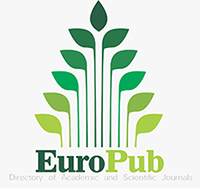Have Contamination Rates Increased In Intensive Care Units During The COVID-19 Pandemic?
Impact of the pandemic on blood culture contamination rates
DOI:
https://doi.org/10.5281/zenodo.10019782Keywords:
COVID-19, Blood Culture, Coagulase Negative Staphylococcus(CNS)Abstract
Objective: In this study, the COVID-19 pandemic; Due to reasons such as prolonged hospital stay in intensive care units (ICU), the use of various drugs in different regimens (such as high-dose steroids), increased workload, rapid patient circulation, there is no difference in the distribution of bacterial pathogens and contamination rates that may cause blood infections in ICUs compared to the pre-pandemic period. We aimed to examine whether it causes a change or not.
Materials and Methods: In our study; Between April 1, 2020, and March 31, 2022, when the COVID-19 ICUs of our hospital were actively serving, real-time reverse transcriptase polymerase chain reaction (RT-PCR) test was positive in oropharyngeal and nasopharyngeal swabs in these ICUs, or the PCR test was negative. In this study, microorganisms grown in blood cultures of patients with clinical diagnosis of COVID-19 and blood culture contamination rates were compared with the blood culture growth and contamination rates of patients hospitalized in various ICUs between March 1, 2018 and February 29, 2020, which we accept as the pre-pandemic period (PPP).
Results: In our study, 2475 blood cultures taken from 1092 patients followed in COVID-19 intensive care clinics were sent to our laboratory in pandemic period (PP). Of this patient group, 640 were men and 452 were women. The mean age was calculated as 70.23 (18-100). In PPP, a total of 5854 blood cultures from 1968 patients came to our laboratory from different intensive care clinics of our hospital. Of these patients, 1164 were male and 804 were female. The mean age was calculated as 63.16 (0-99). No growth was detected in 57.87%(3388) of the samples received in PPD, and the causative microorganism was isolated in 38.81%(2272). Contamination rate was 3.31% (194). In PP, growth was not detected in 48.81% (1208) of the incoming samples, while the causative microorganism was isolated in 28.89% (715), the contamination rate was calculated as 22.30% (552). The most common causative bacteria isolated in PP was Klebsiella pneumoniae (24.34%). Staphylococcus epidermidis (17.05%) was the most frequently isolated causative bacteria in PPP.
Conclusion: As a result, in our study, it was seen that the most commonly grown bacteria in blood cultures were CNS. CNSs are isolates that are generally considered contaminants. When PD and PPV are compared, there is a significant increase in contamination rates.
Downloads
References
Felsenstein S, Herbert JA, McNamara PS, Hedrich CM. COVID-19: Immunology and treatment options. Clinic Immun. 2020: 108448.
Topcu AW, Söyletir G, Doğanay M, editörler. Enfeksiyon Hastalıkları ve Mikrobiyolojisi Etkenlere Göre Enfeksiyonlar. İstanbul: Nobel Tıp Kitapevleri; 2017.
Gürlevik SL. Koronavirüsler ve Yeni Koronavirüs SARS-CoV-2. Cocuk Enf Derg. 2020; 14(1): 46-8.
COVID-19 (SARS-CoV-2 Enfeksiyonu) Genel Bilgiler, Epidemiyoloji ve Tanı. Ankara: T. C. Sağlık Bakanlığı Halka Sağlığı genel Müdürlüğü [Son güncellenme tarihi: 07.12.2020; 15.03.2021]. https://covid19.saglik.gov.tr/Eklenti/39551/0/COVID19rehberigenelbilgilerepidemiyolojivetanipdf.pdf
Ntusi N, Aubin L, Oliver S, Whitelaw A, Mendelson M. Guideline for the optimal use of blood cultures. S Afr Med J 2010; 100(12): 839-43.
Chiarini A, Palmeri A, Amato T, Immordino R, Distefano S, Giammanco A. Detection of bacterial and yeast species with the Bactec 9120 automated system with routine use of aerobic, anaerobic, and fungal media. J Clin Microbiol 2008; 46(12): 4029-33.
Hall KK, Lyman JA. Updated review of blood culture contamination. Clin Microbiol Rev 2006; 19(4): 788- 802.
Darge`re S, Cormier H, Verdon R. Contaminants in blood cultures: importance, implications, interpretation and prevention. Clin Microbiol Infect. 2018;24(9):964–9.
Zhu NJ, Rawson TM, Mookerjee S, et al. Changing patterns of bloodstream infections in the community and acute care across 2 coronavirus disease 2019 epidemic waves: a retrospective analysis using data linkage. Clin Infect Dis. 2021;1–10:ciab869. https://doi.org/10.1093/cid/ciab869.
Ohki R, Fukui Y, Morishita N, Iwata K. Increase of blood culture contamination during COVID-19 pandemic. A retrospective descriptive study. Am J Infect Control. 2021;49(11):1359–61.
Sieswerda E, de Boer MGJ, Bonten MMJ, et al. Recommendations for antibacterial therapy in adults with COVID-19 – an evidence based guideline. Clin Microbiol Infect. 2021;27(1):61–6.
Damonti L, Kronenberg A, Marschall J, et al. The effect of the COVID-19 pandemic on the epidemiology of positive blood cultures in Swiss intensive care units: a nationwide surveillance study. Crit Care. 2021;25:403.
Cunha BA, Lortholary O, Cunha CB. Fever of unknown origin: a clinical approach. Am J Med. 2015;128(10):1138.e1-1138.e15.
Wright WF, Auwaerter PG. Fever and fever of unknown origin: review, recent advances, and lingering dogma. Open Forum Infect Dis. 2020. https://doi.org/10.1093/ofid/ofaa132.
Caldero´n-Parra J, Muin˜o-Miguez A, Bendala-Estrada AD, et al. Inappropriate antibiotic use in the COVID-19 era: Factors associated with inappropriate prescribing and secondary complications. Analysis of the registry SEMI-COVID. PLoS ONE. 2021;16(5): e0251340.
Epidemiology Working Group for NCIP Epidemic Response, Chinese Center for Disease Control and Prevention. The epidemiological characteristics of an outbreak of 2019 novel coronavirus diseases (COVID-19) in China. Zhonghua Liu Xing Bing Xue Za Zhi. 2020;41(2):145-51. https://doi.org/10.3760/ cma.j.issn.0254-6450.2020.02.003
Zhou F, Yu T, Du R, et al. Clinical course and risk factors for mortality of adult inpatients with COVID-19 in Wuhan, China: a retrospective cohort study. Lancet. 2020;395(10229):1054-62.
Nori P, Cowman K, Chen V et al. Bacterial and fungal coinfections in COVID-19 patients hospitalized during the New York City pandemic surge. Infect Control Hosp Epidemiol 2021; 42: 84-8.
Tiri B, Sensi E, Marsiliani V et al. Antimicrobial Stewardship Program, COVID-19, and Infection Control: Spread of Carbapenem-Resistant Klebsiella Pneumoniae Colonization in ICU COVID-19 Patients. What Did Not Work? J Clin Med 2020; 9: 2744
Lansbury L, Lim B, Baskaran V, Lim WS. Coinfections in people with COVID-19: a systematic review and meta-analysis. J Infect 2020; 81: 266- 75.
Langford BJ, So M, Raybardhan S et al. Bacterial co-infection and secondary infection in patients with COVID-19: a living rapid review and metaanalysis. Clin Microbiol Infect 2020; 26: 1622
Sepulveda J, Westblade LF, Whittier S et al. Bacteremia and Blood Culture Utilization during COVID-19 Surge in New York City. J Clin Microbiol 2020; 58
Goyal P, Choi JJ, Pinheiro LC et al. Clinical Characteristics of Covid-19 in New York City. N Engl J Med 2020; 382: 2372-4.
Tosun Mİ, Küçük B, Aral M. COVID-19 PCR Pozitif Hastaların Kültür Sonuçlarının Değerlendirilmesi. Fırat Tıp Dergisi 2022; 27(3): 209-212.
Aytaç Ö, Şenol FF, Şenol A, Öner P, Aşçı Toraman Z. COVID-19 pandemisi öncesi ve sırasında yoğun bakım ünitesi hastalarından alınan kan kültürü izolatlarının tür dağılımı ve antibiyotik duyarlılık profillerinin karşılaştırılması. Turk Mikrobiyol Cemiy Derg. 2022;52(1):39-47.
Küçükateş E, Gültekin N. Yoğun bakım ünitelerinde yatan hastaların kan kültürlerinden izole edilen mikroorganizmalar ve antimikrobiyal duyarlılıkları. Haseki Tip Bul. 2016;54(2):97-102. https://doi.org/10.4274/haseki.2872
Ece G. Kan kültüründe üreyen izolatların dağılım ve antibiyotik duyarlılık profilinin incelenmesi. Haseki Tıp Bülteni. 2013;51:151-6.
Gülmez D, Gür D. Hacettepe Üniversitesi İhsan Doğramacı Çocuk Hastanesi'nde 2000-2011 yılları arasında kan kültürlerinden izole edilen mikroorganizmalar: 12 yıllık değerlendirme. J Pediatr Infect. 2012;6:79-83.
Çopur Çiçek A, Şentürk Köksal Z, Ertürk A, Köksal E. Rize 82.Yıl Devlet Hastanesi'nde bir yıllık sürede kan kültürlerinden izole edilen mikroorganizmalar ve antibiyotiklere duyarlılıkları. Türk Hij Den Biyol Derg. 2011;68:175-84
Morkel G, Bekker A, Marais BJ, Kirsten G, vanWyk J, Dramowski A. Blood stream infections and antimicrobial resistance patterns in a South African neonatal intensive care unit. Paediatr Int Child Health. 2014;34:108-14
Hoenigl M, Wagner J, Raggam RB, Prueller F, Prattes J, Eigl S et al. Characteristics of hospital-acquired and community-onset blood stream infections, SouthEast Austria. PloS One. 2014;9:e 1047
Reimer LG, Wilson ML, Weinstein MP. Update on detection of bacteremia and fungemia. Clin Microbiol Rev. 1997;10:444-65.
Kılınç Ç, Güçkan R, Kahveci M, Kayhan Y, Pirhan Y, Özalp T. Kan kültürlerinde üreyen gram negatif izolatların dağılımı ve antibiyotik direnç profilleri. Int J Basic Clin Med. 2015;3(3):125-30.
Barış A, Bulut ME, Öncül A, Bayraktar B. Distribution of clinical isolates at species level and their antibiotic susceptibilities in intensive care units patients. Türk Yoğun Bakım Derneği Dergisi. 2017;15(1):21-7
Şirin MC, Ağuş N, Yılmaz N, et al. Yoğun bakım ünitelerinde yatan hastaların kan kültürlerinden izole edilen mikroorganizmalar ve antibiyotik duyarlılıkları. Turk Hij Den Biyol Derg. 2017;74(4):269-78. https://doi.org/10.5505/TurkHijyen.2017.94899
Downloads
Published
How to Cite
Issue
Section
License
Copyright (c) 2023 Chronicles of Precision Medical Researchers

This work is licensed under a Creative Commons Attribution-NonCommercial-ShareAlike 4.0 International License.





